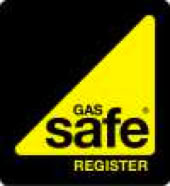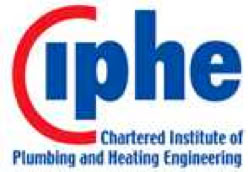
Mike the Boilerman -
Gas Safe Registered boiler and central heating repair technician in west Berkshire

Mike the Boilerman -
Gas Safe Registered boiler and central heating repair technician in west Berkshire
This is a sore point amongst responsible heating engineers, so this page is a bit of a rant at first.
Although I only do repairs these days, I still regularly get enquiries for new boilers. People try to persuade me to do theirs, telling me all they want is a 'simple boiler swap'.
Unfortunately, the simple 'boiler swap' no longer exists. Not legally anyway. Fitting a new boiler means complying with an avalanche of restrictive rules, regulations and instructions, and some of these can be EXPENSIVE to observe. The net result is that my quotation for a fully compliant replacement boiler used to make me look as though I am trying to rip off my customer, when I'm not (although I no longer fit new boilers). The potential new customer remains suspicious particularly when they have another estimate for half the price from someone willing to take all the short cuts.
The other problem that crops up is the 'cowboy customer'. The one who says they don't care about the regulations and asks me to do a quote ignoring the regs and doing it the cheap way, because they don't mind if it is going to save them bags of money. Well I care about the regulations. I'm the one being asked to commit the offences, and I just don't do it. What would be the point (apart from to get the work)?
OK, rant over. Now here are the main requirements which can be expensive to meet and are often ignored:
1) Condensing boilers are mandatory under the Building Regulations in most situations. They cost £100-£200 more to buy than their old non-condensing equivalent, and they also need a drain connection to carry away the condensate they produce. This can be trivial to install or a major task adding half a day or more to the work. Sometimes moving the boiler to a different location in the house is the only way to achieve the drain connection. All this is avoided by ignoring the Building Regulations and fitting a non-condensing boiler instead.
2) 'Energy-efficient' controls are now compulsory under the Building Regulations. Most existing boilers are half way there with thermostatic control of both heating and hot water but separate temperature control of the sleeping areas is now required. This can be achieved by fitting thermostatic radiator valves in the bedrooms, but conversion to 'fully pumped' pipework format is necessary unless already installed.
3) A new gas supply pipe is usually necessary to comply with the HSE and Gas Safe Register guidelines on permissible pressure drops between the gas meter and the appliance. We are now allowed only 1mbar pressure drop, and this means most existing gas supply pipes are too small. A new boiler will usually work perfectly well connected to the existing pipe with a pressure drop of 3 or 4 mbar, but to comply with this guidance a new, larger gas supply pipe usually has to be installed all the way from the meter to the new boiler. When boiler and meter are on opposite sides of the house this can add a day’s work, without even taking into account re-instatement of disrupted decorations etc.
4) Power flushing. Virtually all boiler manufacturers demand their boilers are connected to clean heating systems, and decline to accept warranty claims for failures caused by sludge or corrosion deposits in the circulating water. This means cleansing the existing radiator system before connecting the new boiler. Powerflushing is the usual way to do this and it adds about a short day's work to power flush a biggish heating system when done thoroughly. Some installers will fit a magnetic filter instead of powerflushing. A magnetic filter AND powerflushing is best!
5) Electrical wiring in kitchen. The Building Regulations effectively require all wiring in kitchens (apart from repairs) to be carried out by qualified electricians. Very few heating engineers are formally qualified to carry out electrical work so compliance means employing a separate electrician to connect up the boiler if installed in the kitchen. The problem with employing an electrician is that he will insist the installation is brought up to current safe electrical standards, while the plumber would have just put the same wire that fed the old boiler back into the new one.
6) Pump over-run wiring. Most condensing boilers have a device built into them to control the pump, keeping it running for a few minutes after the burners have shut down (to distribute the residual heat and protect the fragile high-performance heat exchanger, in case you were interested). This means running an extra cable from the boiler location to the pump location (usually next to the hot water cylinder upstairs in the airing cupboard). Installing this extra cable can be time consuming and disruptive to carpets and decorations. Ignoring this requirement used to be an easy short cut to make a bit more out of a tight price on a boiler installation. Fortunately nowadays there are one or two boilers on the market which don’t need this pump over-run wiring but do check your installer has considered the pump over-run when selecting a boiler to recommend.
7) Post-installation cleansing and corrosion inhibiting. Central heating systems slowly corrode on the inside unless corrosion inhibitor is added to the circulating water, creating a black sludge that blocks heat exchangers, radiators, pipes, and generally causes a variety of problems. A dose of decent quality inhibitor costs around £15, but leaving it out won't show up for many years, by which time the name of the offending installer will have been long forgotten. The corrosion effect is accelerated if the 'post installation cleanse' is missed out. This is a quick cleanse to remove the flux residues left by the soldering process used in the installation of the new boiler pipe connections. Again, no-one will know if it is skipped, until a few years later when the corrosion problems begin early.
8) Gas Work Notification. This is a compulsory 'service' originally introduced by CORGI. Gas installers are now obliged to provide Gas Safe Register with details of every gas appliance appliance installed, along with other information including the customer name and address. Gas Safe Register then undertake to provide the customer with a document certifying that the work has been carried out in accordance with the Gas Regulations and the Building Regulations. If you don't receive the Gas Safe Register certificate, then your installation probably wasn't notified, possibly because some of the shortcuts listed above were taken.
There are plenty of other short-cuts, but these are the primary and most common ones.
OK, I still haven't said how much a new boiler should cost ;-) Well.... a cheap and cheerful boiler from B&Q or similar is about £600. A day's work to fit it, taking all available short cuts will be about the same, so £1,200 roughly.
Doing the job properly, by the book, I'd suggest a good uality boiler fitted well might result in a typical bill of approaching £3,000, but subject to wide variation.
Hope that helps.....
If you like what I write, please Buy me a coffee. Thank you kindly!

Copyright Michael Bryant 2025
Site first published 16th January 2004
Site last updated 13th November 2025
Gas Safe Register 197499, CIPHE registration number 009909L

This website makes use of cookies. Please see my privacy policy for details.